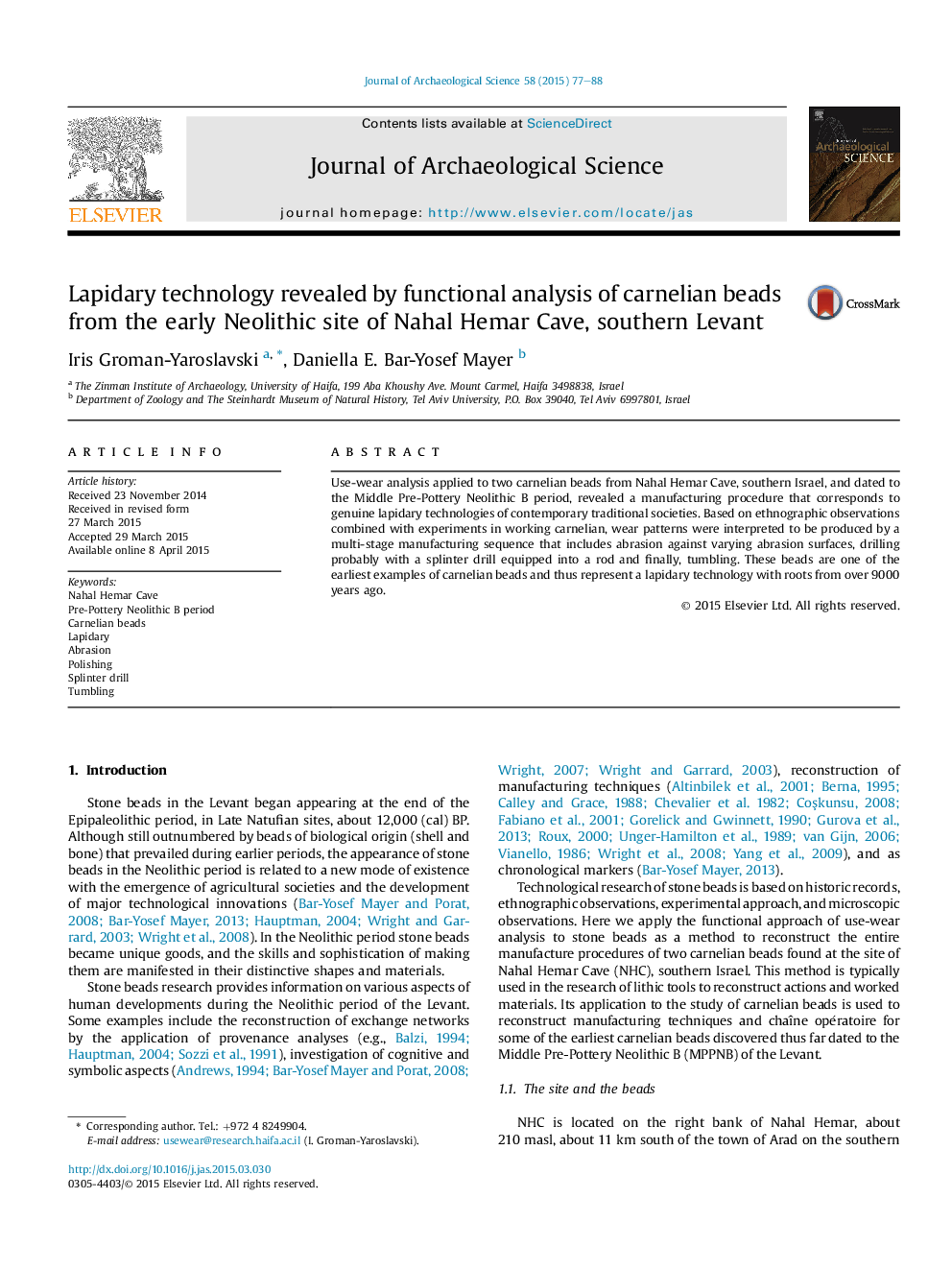| Article ID | Journal | Published Year | Pages | File Type |
|---|---|---|---|---|
| 7441882 | Journal of Archaeological Science | 2015 | 12 Pages |
Abstract
Use-wear analysis applied to two carnelian beads from Nahal Hemar Cave, southern Israel, and dated to the Middle Pre-Pottery Neolithic B period, revealed a manufacturing procedure that corresponds to genuine lapidary technologies of contemporary traditional societies. Based on ethnographic observations combined with experiments in working carnelian, wear patterns were interpreted to be produced by a multi-stage manufacturing sequence that includes abrasion against varying abrasion surfaces, drilling probably with a splinter drill equipped into a rod and finally, tumbling. These beads are one of the earliest examples of carnelian beads and thus represent a lapidary technology with roots from over 9000 years ago.
Related Topics
Physical Sciences and Engineering
Materials Science
Materials Science (General)
Authors
Iris Groman-Yaroslavski, Daniella E. Bar-Yosef Mayer,
